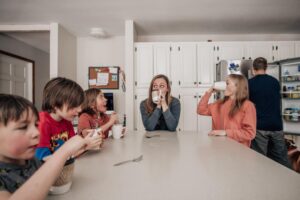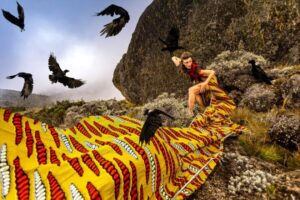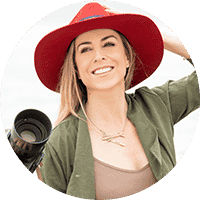Tips for Making a Living as a Travel Photographer with Pro Laura Grier
June 13th, 2023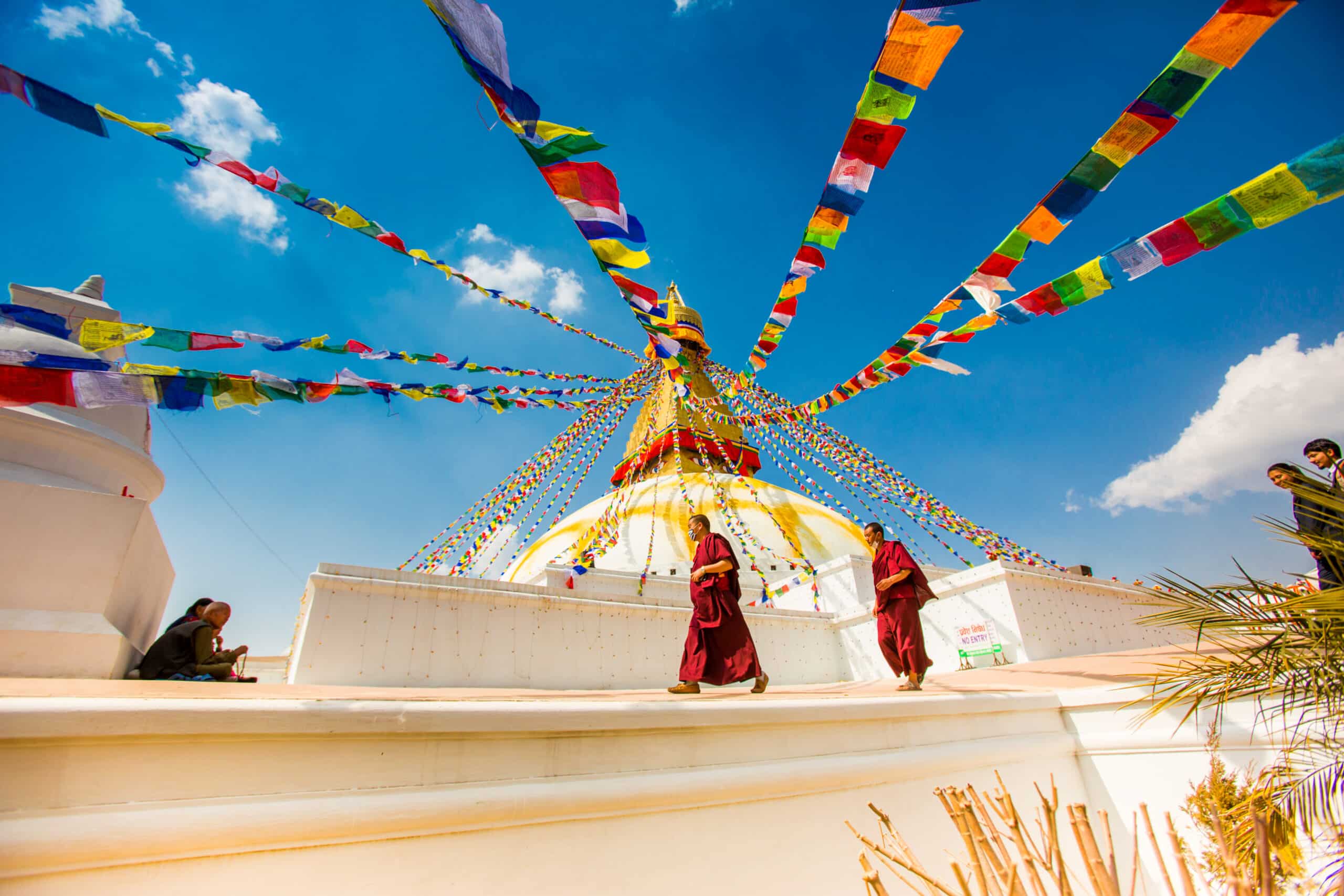
Laura Grier has spent the past 22 years working as a photojournalist on all seven continents and made a life out of exploring the world, capturing and writing about her experiences. We recently had the pleasure of sitting down with this inspiring photographer and long-time Zenfolio Ambassador to discuss her tips for how to get started in travel photography. From researching the most interesting destinations to gear to how to find paid work, Laura held nothing back.
Laura: Thank you. I’m an adventure travel photojournalist. I shoot for the National Geographic Artisan Catalog. I also started a hat company working with the same artisans I’ve been photographing for the last 20 years. Now we’re in business and partnership with each other, exporting artisan goods.
I’ve had lots of different experiences through working with National Geographic. And also I do a lot of travel tourism. I’ll shoot for hotels or cruise lines tourism boards, which are essentially the PR companies of every state and country.
Another part of my business is providing supplementary photography for different writers that I work with a lot. I also still shoot weddings and events.
How can someone who doesn’t have any experience get into travel photography?
There are a couple things I would suggest. I did an internship with National Geographic in DC when I was in college, and I think internships are a great way to begin. There’s a lot of different travel publications and blogs, such as Thrillist or Matador Network. They’re constantly looking for contributors, and a lot of their contributors are writers so they’re not really good at photography. You can always partner up with existing writers that you find and say, “Hey, I’d love to supplement your articles with my imagery.”
Another way is to build up an online portfolio and have your own blog. It is really helpful because a lot of travel photography involves writing as well. A lot of publications want you to be able to do both and be an actual photojournalist. So I think showing and self-publishing your work with a story attached is really helpful. If you already have a library of imagery on your website or blog, you can market that to tourism boards and say “Hey, I shot amazing images from Mexico (or here or there.) Would you like to use them?”
There’s a website I recommend called TravMedia, where you can create a profile as a journalist or a photographer. They also have a show every year. The biggest one is called International Media Marketplace, and it’s in January, usually in New York. That’s a great marketplace to go to because it’s all editors; all the tourism boards go there, and journalists and writers. It’s a great way to network. Basically it’s speed dating between travel media people and editors, because everyone gets their budget in January for the year.
Based on the people you meet and network with, you can either be invited on a trip with their budget, or you can just go out and shoot the locations you want to visit and submit it to them. For me, that event was a really helpful place to meet other travel media people.
I still feel like I’m learning as I go and I’ve been doing it for years. If you’re not a writer, remember that writers get invited on trips, and the tourism board doesn’t always think about photographers. My boyfriend is a travel writer and I’ve provided photography for a lot of his articles. I’ve pitched to the PR people or the tourism boards being like, “Hey, could I come as the photographer on your trip, and I could stay in my boyfriend’s room. It wouldn’t cost you an extra hotel room.” And a lot of times they reply “Oh yeah, we didn’t even think about that.”
Then they’ll bring you on a trip or hire you. A lot of times, even just partnering with a writer and supplementing them can turn into a lot of jobs, too. Even though I’ve been doing it for a long time, I’m still pitching ideas. Nat Geo hires me five or six times a year, but they’re not my main form of income. There is still a bit of a hustle involved.
Basically, the best advice is to either partner up with a writer or reach out to tourism boards and seriously, everyone should join TRAVMedia. It’s a great travel media resource.
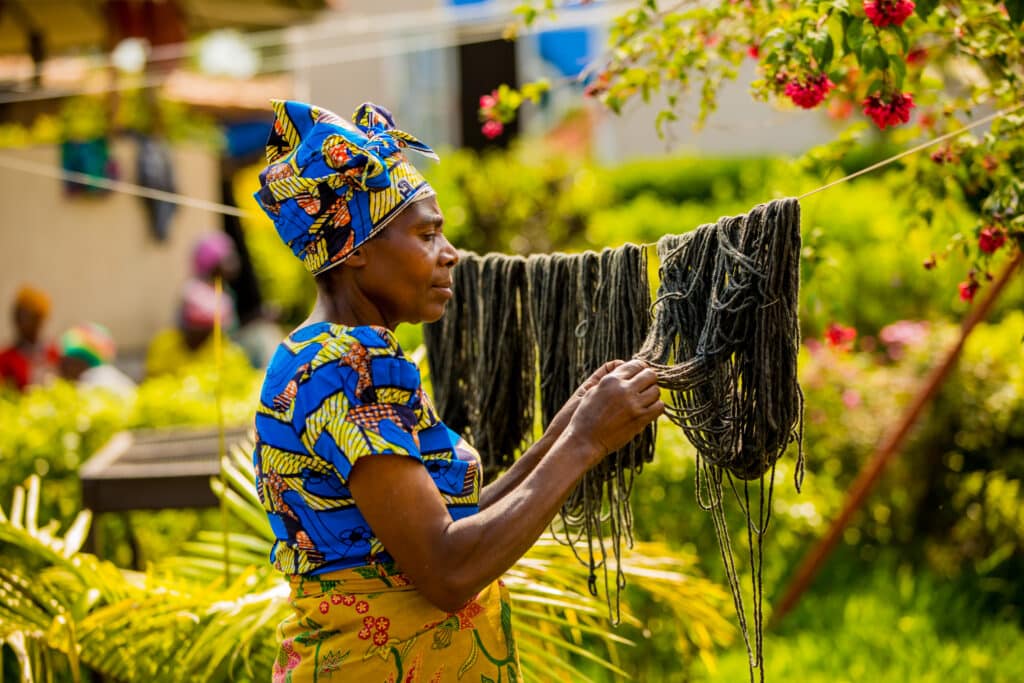
At this point in your career, are you choosing destinations yourself or are you being sent by publications to go places?
I’m mostly choosing them. So for instance, at the show I was just talking about, I went and said “I really want to go to Japan. I really want to go to this region of the world, over to Uzbekistan.” I chose regions I either hadn’t been to or that I’m very interested in going to. And then a few regions that I’m very familiar with, like California. I spend a lot of time in California and sometimes I forget about my own backyard.
I was very specific about who I talked to and who I reached out to. It doesn’t have to be a giant net that you throw out there hoping to get something. I think everyone can be a little bit more intentional about where they want to shoot and what they want to do. It doesn’t make sense to go somewhere that you don’t really feel connected to or you’re not familiar with, unless you really want to go there.
I also feel that way about wedding photography and really any type of photography. I go to hotels that I really want to work with for a wedding, and I make meetings with their marketing director or specifically do a styled shoot there. This way I would have images from the location to blog with and promote so I could attract weddings from there.
I think we can all cast a smaller net and be very specific about where we want to be.
How do you plan and research so you know where the best places are and opportunities for photography are, especially if you’ve never been there before?
This is another reason why reaching out to the tourism board is really important. You can find a lot of the tourism boards through Instagram, or Google it; tourism board of Australia, or whatever location. There’s probably 15 different ones for different regions, but they will work for you for free, almost like a fixer, because their job is to get beautiful stories and imagery and people to come to their locations.
So if you reach out to the tourism board and say “Hey, I’m a photographer. I’d really like to do a styled shoot here. I’ve been dying to go here, and I’d like to write a story about what adventures there are to do in South Australia.” They will be more than happy to help; These are the restaurants you should go to, these are the hotels, this is where you should stay, this is our person that can help you organize this and that.
I use them as a fixer because their job is to show their location in the best light. So they go out of their way to help any journalist or photographer with any type of questions like that, at least in my experience. So even if you’re not getting hired by them to go somewhere, they are still a really good resource to help you or to answer questions. You can also research online for the best weather times to visit, and whether there are any festivals.
You can do a lot of your own research, but I like asking the tourism board because they always know what most people don’t know and can’t find online yet. They’ll know the new things that are about to open, the best spots to visit.
What about your stylized shoots in places that most people have never been before? How do you find those places?
My stylized shoots, for instance Sri Lanka; I did a workshop in Sri Lanka, I had 12 women and we wanted to go to iconic places all across Sri Lanka.
I had a Sri Lankan coordinator that helped me a little bit, but I also did a lot of the research finding insta-famous places and famous images that people have shot for National Geographic and Sri Lanka for inspiration. Then I found out how to get to those places.
Once we were there, I would talk to local people to find out what was the best time of day, and how should we do this? It was crazy because a lot of these places that were insta-famous, the Instagrammer went to the parking lot or the entrance way of a place, but never actually hiked it or explored it.
Our whole vibe was to debunk the Insta-famous places and show you what it really takes to get there and what it’s really like. I found that these places were even more beautiful and cool than Instagram let on. Usually the place that becomes famous in the image is not the coolest part about that location.
I found this one image from National Geographic of the stilt fishermen in Sri Lanka. The men stand on these stilts in the ocean and they fish. I asked locals for help with that; sometimes you’re showing a picture and asking “How do I find this place?” A lot of times an entire trip I’ve done, or a workshop has been planned around and inspired by one image I saw somewhere.
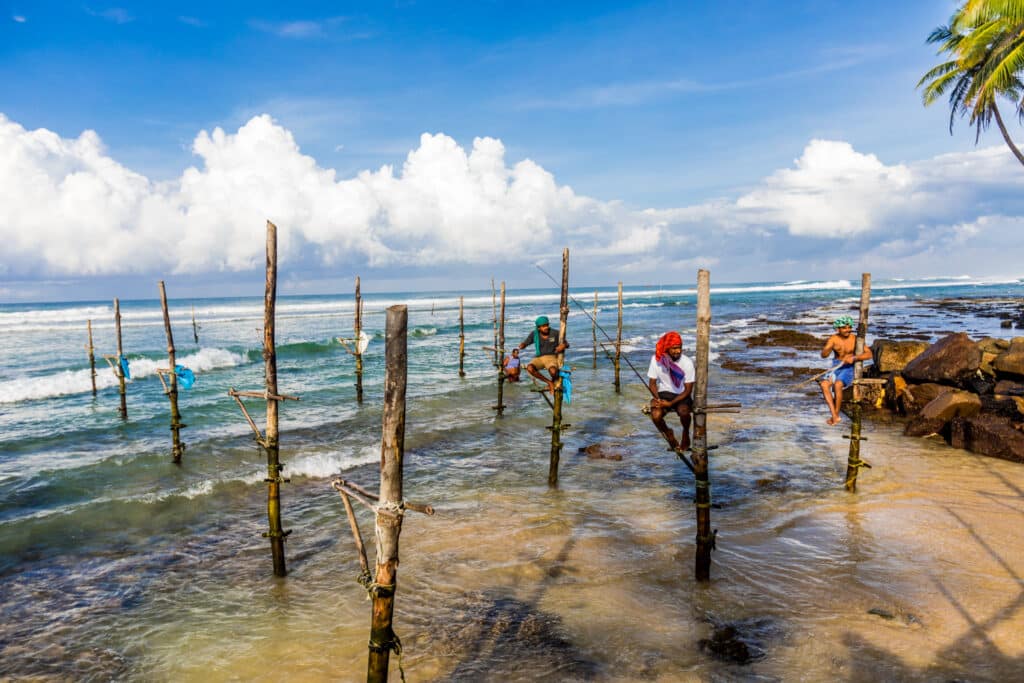
Is communicating with the locals and getting to know the culture a big part of your photography?
In the beginning when I first was traveling in my twenties and shooting pictures, I would just kind of walk around and think “Oh, that’s cool, the woman with really wrinkled skin, I want to photograph her.” I would shoot everything with a long lens and I felt almost like I was stealing images here and there of whatever I was attracted to.
I also found that style of shooting didn’t really help me later on when I was trying to write an article or to do any type of travel writing because the images didn’t really go together. They didn’t tell a story, they were just sort of disjointed images of random people that I didn’t really get permission to photograph.
In order to get images sold or published, you have to have a release and get their permission. Some of the best pictures come from when you actually spent the day with somebody and they know you’re there. They’ve invited you into their house and you’ve had a meal with their family and you’re shooting with a 50 millimeter lens, right near their face.
There’s a really easy app, it’s literally called easy release app, on your cell phone that you can download and have anybody sign a photography release; model release, location release, things like that. Whenever I’m traveling, I don’t need to have a piece of paper or pen, you can just have someone do it on your cell phone. That’s super handy.
How do you get the confidence to go up to someone that you don’t know, especially in another culture or a language that you don’t speak, to make that connection?
My work with National Geographic helped me a lot with that, because we would already have the relationships with a lot of these artisans and have the permission to go into their villages and photograph them and meet them. I’ve been able to call upon them a lot of times saying “Hey, I’m going to Thailand, I’d love to meet these kind of artisans. Could you help me find a person?” I find that you can’t just walk into a random village and start photographing; a lot of villages don’t even accept tourists.
Beside Nat Geo, there’s always local tour guides or companies that work with villages and artisans. Let’s say that you want to meet artisans that work in Guatemala; you could reach out to a clothing company or someone that’s maybe working with those artisans and ask them if they will help get you permission to visit for the day.
One example is Intrepid Travel. They have trips to go meet up with artisans and stuff all over, so you can get that experience, and have a translator with you and permission.
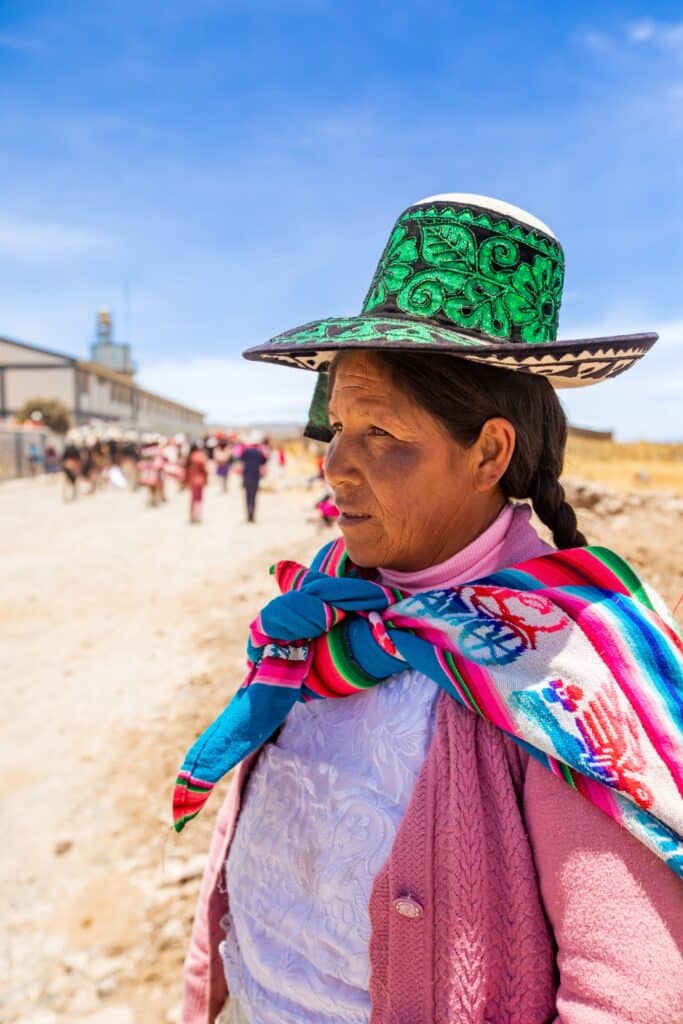
Who do you bring with you to assist on a trip, and what is your essential gear?
A lot of times I’m doing things by myself, which is crazy. Then I’m finding people that help me on the ground, on location. I think the most I’ve ever traveled with was three other photographers or assistants.
I have to keep it pretty minimal. Not only is it kind of just a lot to bring a lot of people in gear and I think, you know, even just my own gear, I keep very minimal. So everything I have has to be portable and carried.
I carry all my own stuff. All my photo gear is always my carry-on when I’m traveling. If it doesn’t fit in the carry-on, I’m not bringing it. I have a tiny drone, my Mavic Pro Air. I have a tiny portable Lowel softbox. I use my Canon external flashes with a little slave on top of the Canon, so I can just put the little flash in the portable softbox and create a studio, all battery powered.
I always have extra batteries and a charger for my phone. I use my cell phone and a little DJI Osmo gimbal for video. I only really use the main video in my camera if I have a tripod and I’m already sitting there doing something on the tripod. I also bring maybe three lenses, a couple camera backs, and my laptop; it all fits in my backpack.
I use a Peak Design backpack, which I think is the greatest photo backpack ever. This thing has gone through hell and back and it’s still in perfect condition and it just holds so much. It’s a smaller backpack, but it holds everything; my laptop, my lenses, this and that. Then I’ll have a side side second bag, either a roller bag or backpack, depending on where I’m going, with all my other gear in it.
So I just have a backpack and a smaller bag. And that’s all my photo gear that I bring, because there’s things like, hiking Kilimanjaro or hiking to some of the villages I’ve had to go to, where there are no power outlets. There’s no way to roll anything. You just have to carry everything.
You just have to figure it out and be portable; that’s my best advice on that.
Do you have a recommendation for a good travel tripod?
There was one that I bought years ago and I now don’t have it, but for years it would go everywhere with me. I think I got it at WPPI and it was one of the best little portable travel tripods; it was only a couple pounds.
I have a little one that folds up really small from Manfrotto, but it’s a full tripod. If I was shooting with a 7,200 lens on it, I wouldn’t want to just leave it by itself. I feel like that would be a little topheavy. But other than that it’s been pretty stable.
Cheryl: I have done quite a bit of photography while hiking, and settled on one from 3 Legged Thing. They’re out of the UK and they have some really great tripods and heads; good for video and still photography. So that’s another one to check out.
What three lenses are your go-to for travel photography?
My favorite three to go on assignment are my 50 prime, f 1.2, my 16 to 35 wide angle, and my 70 to 200. I love my 24 -70 as well; that would be my next choice. Honestly, you have to have a telephoto, you have to have a wide lens, and then you have to have a very, very fast portrait lens.
A lot of times you’re in super low light situations and you just want to have that super low depth of field. Or out in a landscape, you want a high depth of field. So I would say those are my go-to lenses, but I can’t tell you how much I use my 16 to 35. There’s something about, for all my landscape stuff, to get those epic clouds and that sort of distortion and everything. It’s just a magical lens.
What other useful gear would we find in your camera bag on a trip?
Portable chargers for everything that you can actually plug into your regular outlet, as well as USB’s for using with the computer. I think my biggest thing is having power, especially since my drone has to be flown using my cell phone? I use my cell phone as my video. I use it for social media. I also use it as my navigation and everything. So it’s constantly draining. Having a portable charging device is really, really important.
Also having the little mini LED panels that are portable that you don’t need to plug in have been really helpful, whether you’re interviewing somebody on camera or you just need an extra pop of light in a dark place. That’s been really great when you don’t want to use on camera flash for portraits and things like that.
Honestly, having a little mini steady cam/gimbal for my cell phone has been a game changer. You can shoot so much cinematic stuff with that; I use it all the time, and it’s tiny. They range from around $200 down; you can find cheaper ones. The Osmo is the one that I love.
Lastly, having my GoPro and being able to shoot underwater; it has been really easy to use. I just went canyoning the other day in Dominica Island and I wanted to bring my big camera, but you’re jumping off cliffs into the water. I don’t want to do all that with my big waterproof casing, so having a waterproof underwater camera is really helpful.
What is the most invaluable but inexpensive piece of gear you bring on a trip?
My universal adapter; I get so geeked out over having power.
The cheapest, tiny little thing that’s in my bag; zip ties, bare bands, the little carabiners. Having the little plastic sleeve for your cell phone, the waterproof thing that you can put around your neck. Those things have come in handy so many times.
Free Download: Laura’s Gear Checklist
Download Laura’s travel photography equipment checklist to make sure you’re prepared for your next photography adventure.
How do you take care of your gear while you’re traveling? You go places where there’s water, sand, and humidity.
I have to get my stuff overhauled and cleaned a lot. When I come back, I go to Canon, I’m a Canon Pro Service (CPS) member. You can ship your camera off and within two days they have it back to you. In general, I calibrate and clean my stuff once in a while cause it gets banged up.
I photographed a wedding this past year at Burning Man: Let me talk to you about destroying your photo equipment. You do everything, tape it, do all the things; it doesn’t matter. That dust gets everywhere. That experience was crazy.
I’m really good about keeping my lens caps on; and the other thing that just sounds like a no-brainer, but I always turn my camera off before switching my lenses. While it is turned on, your camera is an electromagnetic vacuum and if you take your lens off, it just sucks in everything. So you get a lot of dust spots and stuff in your camera if you don’t turn your camera off when you switch lenses.
I’m also really good about having clear filters on all my lenses to protect the glass while shooting.
Do you ever use other lens filters?
I do it all in post. I used to have filters. I think it’s such a pain to be switching filters all the time, and then you’re getting stuff trapped in them. I’d rather keep one filter on that protects the lens and then do everything in post production for polarizing and stuff like that.
Have you ever thought about creating your own line of camera straps?
That’s really funny that you should say that. We just asked our artisans if they could make guitar straps and things like that. And I guess it would be intention straps, because you can choose which one. So the answer is yes. It’s going to happen soon.
What’s your current favorite camera strap or harness?
I’m not a multi-camera carrier; I’m not a harness person. I don’t like things being strapped to me all the time, so I’m definitely a one camera, maybe I’ll have a side bag with some lenses kind of person. I like the freedom of being able to move around and through places quickly, and I don’t like having a lot of stuff on me.
I did get a new camera strap from Custom SLR, it has the two straps where it splits so it’s better on your shoulder. It’s not just all the weight on one, it separates it into two, because I get really tight neck and shoulders all the time. So there is a camera strap that can be easier on your neck and shoulders.
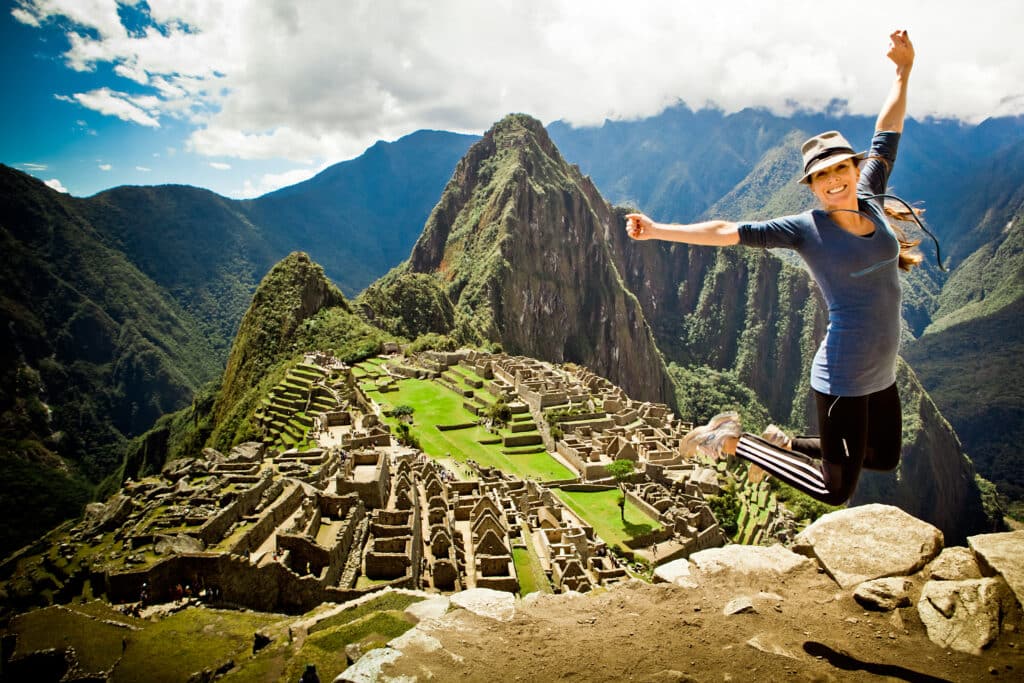
Do you still enjoy your trips or do they feel like work?
I always enjoy everything. There is no separation for me between work and play, and even when I’m sitting here spending time with my family in Virginia, I’m ironing hats for a hat show, and then I’m doing a photo shoot tomorrow. Everything blends all together all the time.
I use my photography all the time in my hat business and met the artisans through my photography and these artisans also are helping me with a nonprofit I’m forming. You never know what your connections are going to be, but I love what I do. I really, really love shooting photos. I think the only time where I’m not having a good time is when I’m not sleeping enough.
In general, if I plan my life well enough and I can get rest, I’m enjoying all the things I’m doing and all the travel I’m doing. I think it is important to make sure that there is rest built in. Even now with certain clients I’ve had, I make sure they fly me in a day early and I make sure that I have time to edit and downtime because it’s really important to build that in. It’s going to make you a happier, better photographer.
I finally realized that you have to have a level of self care, whether it’s yoga or some sort of massage, that needs to happen. I build that in, it’s included in the pricing of my packages because it’s part of the deal, and it’s not that much.
I do enjoy all of it. I wish I could clone myself and have more hours in a day.
Do you also travel just for fun, without your camera?
Sometimes I’m going to new, beautiful places I haven’t been, and then those images I can license to my stock agency. If I didn’t have my camera, I would want my camera. So even as a tourist, I would have my camera. I don’t consider that work, but I could never just travel without my camera, you know?
Especially if I’m going somewhere new, because I would want to document it and it could be something that could make money later on. It’s still fun, but I’m always thinking of ways I can repurpose things and multitask .
It’s also my gift that I give to a lot of my friends and family, this photography. Or I’ll [be traveling and] will want to do a styled shoot somewhere. I’m always blending it. Even with the hats, I’ll wear a hat and I’m going on a trip and of course I’m going to want to shoot pictures of me in a cool place wearing the hat for the hat company.
There’s always things that I’m thinking about when I’m on a trip, even if it’s just a vacation that ends up being kind of a blend of work. And same thing with work; when I’m on a work trip, I’ll extend it a few days and make it a vacation, too. It’s all blended together.
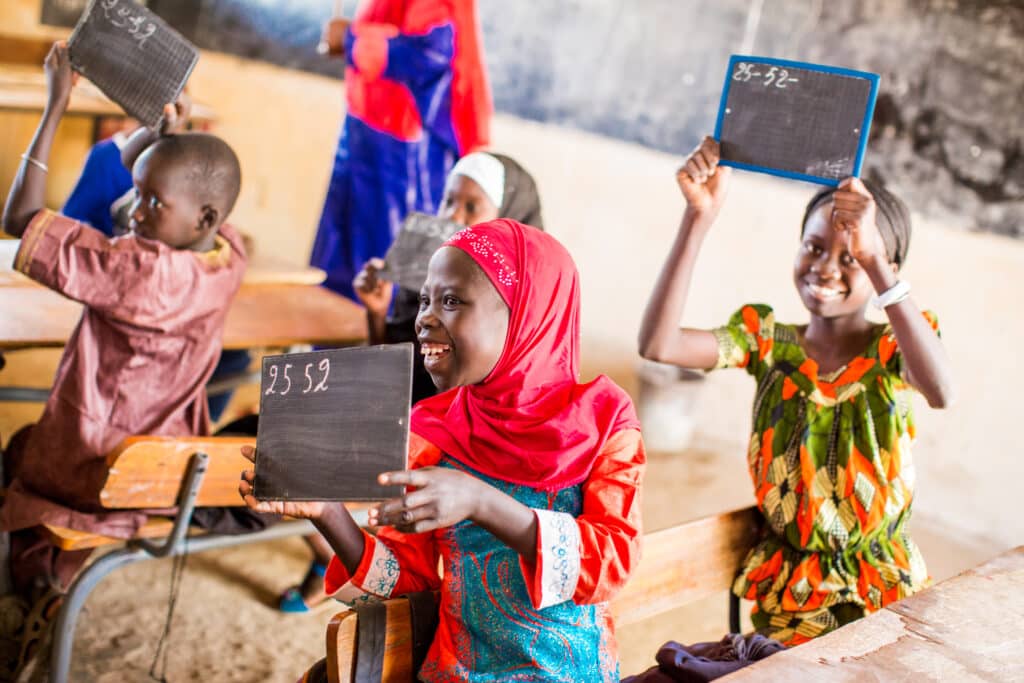
How can photographers learn from you in person?
We had a couple trips that were planned earlier and we had to push them just for various reasons. But in the fall there are going to be a few trips. One is to Iceland. It’s going to be a goddess session trip; a women’s trip where we’re going to be shooting Fashion Goddess portraits along the way in epic locations, similar to the Kilimanjaro series. It’s going to be an amazing journey. We’re going to be going to places in Iceland I’ve never even been to, either.
As for teaching, a lot of my trips I’m there to help you out with your own thing. In some ways, a lot of it is adventure and I’m just a tour leader. Then we set up photo shoots along the way. For the Iceland trip, I’ll facilitate setting up the photo shoots and help people with their settings. Each person’s going to be modeling and having their own pictures taken during that time. It’s a fun, empowering trip that involves photography; I won’t be teaching every day about the basics of photography, but I’ll be there to help with any type of need.
Another trip that we’ll be doing is a visit to our artisans for the hat company; the next one is in November 2023 centered around Cusco and the Sacred Valley. This is one of our origin trips, where everybody on the trip gets a hat and you get to meet all the indigenous artisans and learn about their cultural practices. We will have permission to go into the villages; we’ll do portraits with them.
All of my trips create amazing opportunities to come back with an incredible portfolio from [the location]. It’s not hardcore where every day there’s photo instruction. We’ll usually do photo shoots during the day, then at night we can have a discussion over dinner, cover questions people have or exchange thoughts.
I’ll usually do one evening where I’m talking about editing tips and things like that. It’s very relaxed: It’s like going on an epic trip during the day where you’re taking incredible images and having an adventure, then at night having a fireside chat about photography.
Do you require participants in your trips to have a certain level of photography experience or type of equipment?
I always tell people, bring your professional camera or bring your iPhone.
We can teach on anything; I don’t want people to feel like they’re not good enough, or don’t have good enough equipment to come. I think you can do amazing imagery on any camera that you have, and I want people to be able to enjoy it no matter what level they are.
How many people do you allow each trip?
The most I ever bring on these trips are 12. It’s usually eight to 12, they’re pretty small.
I will be doing more trips to Africa next year. Our Madagascar trip will probably be in the spring of 2024.
Then there is a potential North Pole adventure; Greenland and Northern Arctic Adventure. That will be later in the year, probably wintertime. It seems counterintuitive to go in the winter, but that’s actually the best time to go. We don’t have the dates on it yet, they are TBD, but we have the actual trip planned. That will be on a cruise ship that makes different stops, and we will Zodiac boat to different places.
The upcoming ones will be fall; Guatemala, Peru, and then Iceland will be also probably October, November. Madagascar would most likely be February or March of 2024.
When we post the dates, everything will be found on lauragrier.com. You can follow me on Instagram or join the newsletter on the site. We’ll be announcing them and posting them on the trip section as soon as we have all the dates.
Are there any places still on your bucket list?
My bucket list: I swear it keeps getting longer and longer as I’ve gone places, because you hear about new places you’ve never been. Papua New Guinea is high on my list. Believe it or not, I have not been to Turkey. I’ve flown through the airport, but I haven’t spent a lot of time in Turkey, so I really, really want to head over there.
My main thing is to do an Eastern European road trip. There’s 15 countries I could visit in one road trip, and a lot of them I just don’t know that much about: Albania, Estonia, and Moldova. There’s so many different places out there.
I’m at 88 countries right now, so I’m like, “Hmm, I could probably hit a hundred if I did an Eastern European road trip,” but that isn’t the main reason why I want to do it. I think it would be so cool to just explore on a road trip, learn a lot on the ground and understand the geography because I’m driving. That’s something I’ve always wanted to do.
My jam is going to places where there’s vanishing cultures and indigenous people. I would love to see the Eagle Festival in Mongolia or Siberia and visit the tribes in Papua New Guinea.
I’m also an advanced diver, so I’m trying to hit as many reefs as I can before some of those disappear. I just went and swam with the sperm whales in Dominica Island, it was amazing. I want to go to Tonga, there’s Raja Ampat in the Indonesian islands that’s supposed to be the most spectacular reef on the planet, and it’s really hard to get to.
Find Laura’s top tips for composition and editing in part two of this blog series, and visit her Facebook, Instagram feed, and website to see what exciting things she’ll do next.
Watch our full interview with Laura Grier for more of her professional tips on travel photography.


